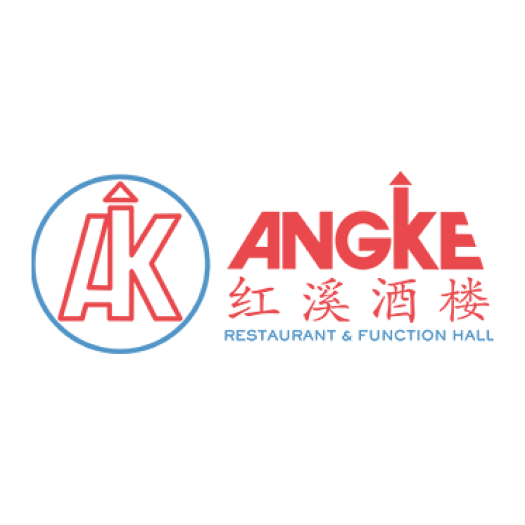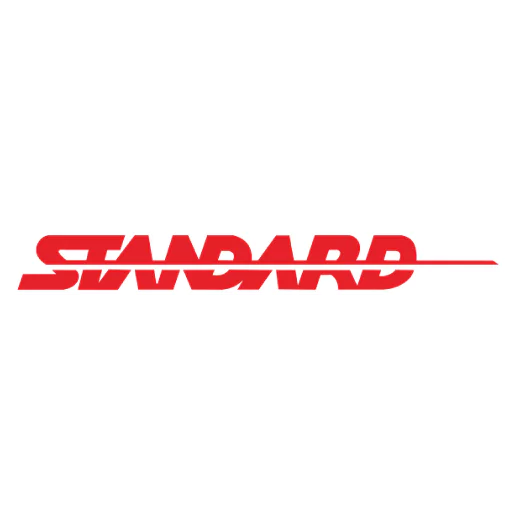In my experience, the wire mesh manufacturing process is filled with complexities that can hinder efficiency. We often face challenges in maintaining precision and consistency across large production runs.
These issues directly impact profitability and our ability to meet client deadlines in wire mesh manufacturing. Implementing a robust manufacturing software is crucial for streamlining operations and overcoming these hurdles.
This guide will walk you through the entire process, offering insights to optimize your operations. Let’s explore how it all works.
Key Takeaways
|

What is Wire Mesh?
Wire mesh is a versatile material made from interconnected metal wires that form a grid-like pattern. It provides structure, filtration, reinforcement, or containment across various industries.
Its technical specifications are defined by wire diameter, aperture size, and the manufacturing method. These parameters dictate its final performance for applications ranging from heavy construction to fine filtration.
Key Differences of Welded and Woven Wire Mesh
Understanding the distinction between welded and woven mesh is crucial for selecting the right material. The manufacturing method directly impacts the final product’s rigidity, flexibility, and ideal applications.
| Feature | Welded Wire Mesh | Woven Wire Mesh |
|---|---|---|
| Manufacturing Process | Wires are fused at each intersection using electrical resistance welding. | Wires are interlaced in an over-under pattern on an industrial loom. |
| Structural Properties | Rigid, one-piece panel with fixed openings and excellent dimensional stability. | Flexible and can be produced in much finer configurations with smaller apertures. |
| Key Strengths | Superior rigidity and uniform strength. | Greater flexibility and suitability for fine filtration. |
| Common Applications | Fencing, security cages, concrete reinforcement, and structural support. | Filtration, sieving, particle separation, and intricate architectural designs. |
The Importance of Wire Mesh Across Industrial Sectors
The versatility of wire mesh makes it indispensable across numerous major industries. Its applications range from heavy-duty structural support to fine, decorative elements.
- Construction: Used as a critical reinforcement material in concrete to enhance tensile strength and prevent cracking.
- Agriculture: Relied upon for creating durable livestock enclosures, aviaries, and protective crop fencing.
- Mining: Essential for heavy-duty screens used in sorting, sizing, and grading raw materials.
- Architecture & Design: Utilized for modern building facades, decorative partitions, and safety balustrades for aesthetic appeal.
Key Materials in the Wire Mesh Manufacturing Process
The choice of raw material is a foundational step that dictates the final product’s performance and durability. This decision balances functional requirements with environmental exposure and overall project cost.
- Stainless Steel: This premium alloy offers superior corrosion resistance, making it ideal for hygienic or harsh environments. Its common grades, like 304 and 316, ensure longevity in food processing and marine applications.
- Carbon Steel: Valued for its exceptional strength and cost-effectiveness, it is the workhorse for security fencing and concrete reinforcement. It provides durability in applications where moisture exposure is not a primary concern.
- Galvanized Steel: This is carbon steel coated with a protective zinc layer to guard against rust and corrosion. It offers a practical middle ground for outdoor applications like animal enclosures and fencing.
- Other Specialized Materials: Metals like aluminum are used for lightweight applications, while copper and brass offer unique aesthetic and antimicrobial properties. Material selection ultimately depends on strength, environment, budget, and desired service life.
Critical Stages in the Wire Mesh Manufacturing Process
Transforming raw metal into a precision-engineered product involves a sequence of highly controlled stages. Mastery over this workflow is essential for ensuring product quality and manufacturing efficiency.
- Wire Drawing: A thick metal rod is pulled through a series of dies to reduce its diameter to the desired gauge. This process increases the wire’s tensile strength and creates a smooth surface finish.
- Cleaning and Coating: The drawn wire is thoroughly cleaned to remove impurities before any protective coating is applied. This step is crucial for ensuring strong welds and preventing premature corrosion.
- Weaving or Welding: In this core stage, wires are either interlaced on a loom to create flexible woven mesh or fused at intersections to form rigid welded mesh. The machinery’s precision determines the uniformity and integrity of the final product.
- Finishing: The formed mesh undergoes final processes like trimming, flattening, or applying additional coatings like PVC. These steps enhance durability, safety, and aesthetic appeal for the end application.

What are the Operational Challenges in Wire Mesh Manufacturing & How to Overcome Them?
Modern manufacturing facilities face persistent operational hurdles that can impact efficiency and profitability. Technology offers powerful solutions to transform these challenges into strategic advantages.
- Complex Inventory Management: Tracking diverse wire coils is difficult, but an ERP system provides real-time visibility to prevent stockouts and reduce excess capital. It automates reordering and ensures materials are available when needed.
- Inefficient Production Scheduling: Manual scheduling leads to delays, but Advanced Planning and Scheduling (APS) modules optimize machine use and maximize throughput. This allows for quick adjustments to accommodate urgent orders and minimize downtime.
- Inconsistent Quality Control: Maintaining uniform quality is a challenge, which is solved by integrated QC modules that enable real-time monitoring on the shop floor. This data-driven approach reduces scrap rates and ensures products meet specifications.
- Unexpected Machine Downtime: Unplanned stops drain profitability, but a maintenance management system enables a proactive strategy. It schedules preventive maintenance automatically to keep production lines running smoothly.
Key Metrics (KPIs) to Measure Wire Mesh Manufacturing Success
To effectively manage and improve performance, tracking the right Key Performance Indicators (KPIs) is essential. These metrics provide objective, quantitative insights into the health of your production processes.
- Overall Equipment Effectiveness (OEE): This metric provides a holistic view of productivity by combining availability, performance, and quality into a single score. Tracking OEE helps identify major losses and provides a clear framework for improvement.
- Scrap Rate: This KPI measures the percentage of raw material wasted during production, directly impacting material costs and profitability. Monitoring this helps identify inefficient processes or equipment that requires recalibration.
The Role of Manufacturing Software in Wire Mesh Manufacturing
In a competitive market, manufacturing software acts as the digital backbone that connects and optimizes every production stage. It transforms manual, error-prone processes into an automated, data-driven system for greater agility.
- Centralized Data Management: The software creates a single source of truth by integrating data from sales, procurement, and inventory. This ensures all decisions are based on accurate, up-to-the-minute information.
- Resource Optimization: It enables precise calculation of material requirements based on orders and forecasts. This drastically reduces the risk of stock discrepancies and minimizes capital tied up in inventory.
- Enhanced Production Scheduling: Advanced scheduling tools allocate jobs to the most appropriate machines at the optimal time. This minimizes machine idle periods and maximizes overall factory throughput.
- End-to-End Visibility: By connecting all facets of the operation, the software provides managers with the insights needed to drive continuous improvement. This empowers businesses to sustainably boost their bottom line.
Optimize Your Wire Mesh Manufacturing with HashMicro’s Solution
HashMicro provides an integrated ERP system designed to streamline complex manufacturing processes. With HashMicro Manufacturing Software, your company can overcome operational challenges and achieve greater visibility.
Features of HashMicro Manufacturing Software:
- Manufacturing Production Scheduling: Creates optimized production schedules by analyzing real-time demand data and current factory capacity.
- Bill of Materials (BoM) Management: Manages material recipes and compositions in a structured database to ensure consistency for every production batch.
- Manufacturing Quality Control: Implements check-points at every production stage to verify that products meet predefined quality standards.
- Machine Maintenance Management: Schedules automated maintenance tasks based on machine usage hours or production cycles to prevent unexpected breakdowns.
- Real-Time Production Dashboard: Displays live production data through a visual interface to help managers monitor progress and operational status.
Our solutions can significantly improve your operational efficiency and data transparency. To see how our system works, we invite you to try the free demo now.
Conclusion
The wire mesh manufacturing process is a complex journey from raw material selection to finished product. Mastering each stage is critical for ensuring quality, but traditional methods often fall short.
Adopting a comprehensive solution like HashMicro Manufacturing Software is a strategic necessity for modern manufacturers. It provides the end-to-end visibility needed to optimize resources, reduce waste, and enhance productivity.
Embracing these digital tools is the definitive step toward achieving sustainable growth and a competitive advantage. Take the first step by exploring our free demo to see the impact firsthand.
FAQ about Wire Mesh Manufacturing
-
What is the main material for wire mesh?
The most common materials are stainless steel for corrosion resistance, carbon steel for strength and affordability, and galvanized steel for added protection against rust. Other materials like aluminum and copper are used for specialized applications.
-
How is welded wire mesh made?
Welded wire mesh is made by arranging wires in a grid and using electrical resistance to fuse them together at each intersection. This creates a strong, rigid panel with fixed openings.
-
What is wire mesh used for in construction?
In construction, wire mesh is primarily used as reinforcement within concrete slabs, walls, and pipes. It helps control cracking and adds significant tensile strength to the concrete structure.





























